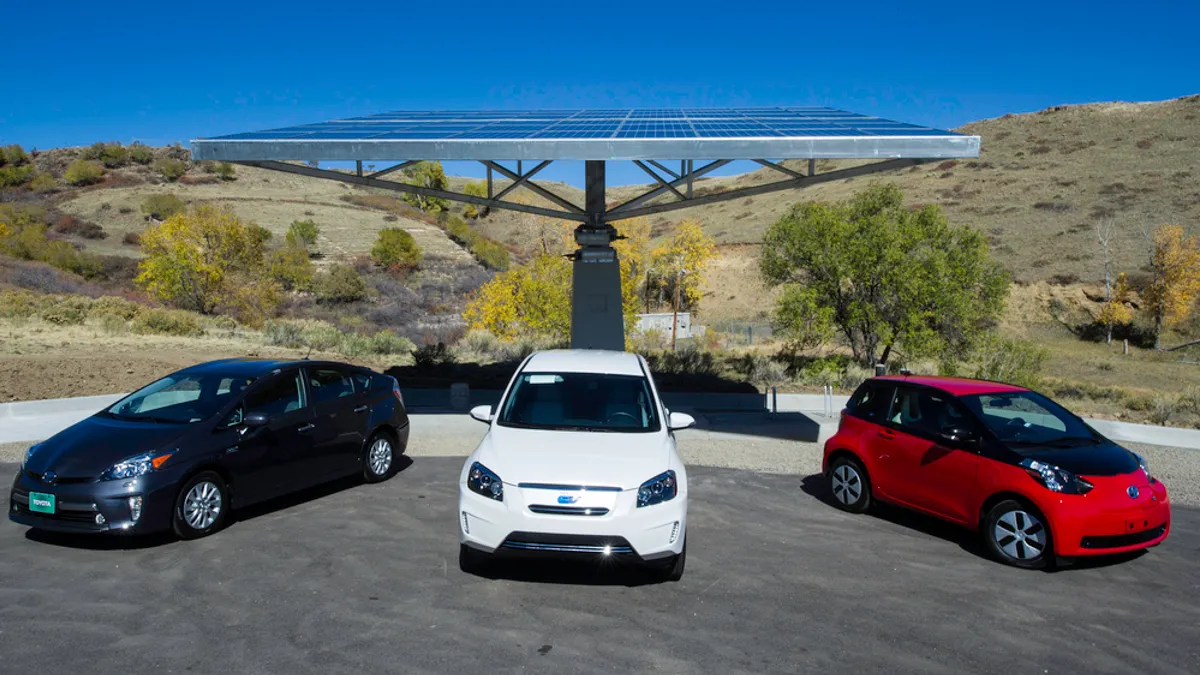Editor's Note: The following is a guest post written by Michael Shepard. Shepard is the chairman of energy research and advisory firm E Source. This article is the third in a five-part series from Shepard on the opportunity for utilities in electric vehicles. You can find the first article, "The $100B prize: Why EVs are the opportunity of the century for utilities," here and the second article, "Why the time for utilities to promote EVs is now—and why the moment could quickly fade," here. If you are interested in submitting a guest post, please review these guidelines.
One of the biggest barriers to rapid adoption of EVs is that most consumers barely know they exist.
Scan auto industry ads and it’s easy to see why—the overwhelming majority are for conventional vehicles. Just as it has taken a couple of decades and huge amounts of advertising money to convince Americans to pay a premium for pickup trucks, it’s going to take a major outreach effort to get most Americans to even consider buying an EV.
UC Davis researcher Ken Kurani surveyed households that shopped for or bought a new vehicle in 2015. In two of the hottest EV markets in the country—California and Oregon—only 7% of households actively shopped for an EV. Across the northeastern states the survey found that only 3-4% of car buyers looked at EVs. A number of the surveyed households didn’t even realize EVs were for sale in their area.
Automakers will have to ramp up their marketing of EVs if they hope to raise consumer awareness. But because they’ll have to keep pushing their standard vehicle lines too, they won’t be sending a consistent message to drive electric.
Given that electric utilities have so much to gain from the adoption of EVs, they may be the business institution with the greatest motivation to drive a major promotional effort around electric transportation.
Many utilities publish information about EVs on their websites, and some promote EVs at ride and drives or other community events and in their newsletters. This is a good start, but these channels alone will not move the needle significantly on consumer awareness. That’s going to require mainstream advertising. Think something akin to the dairy industry’s “Got Milk?” campaign, with local and regional differences that reflect the unique characteristics of individual utilities, customer demographics, and market and regulatory conditions.
Fortunately, utilities have a lot of “street cred” when it comes to EVs. Consumers trust utilities to provide accurate information about EVs, more than they trust government and auto industry sources, according to research conducted by an unnamed EEI member utility. This credibility is reinforced by the fact that utilities promote EVs as a class, rather than try to sell any particular make or model.
A small but growing number of utilities already have creative EV marketing campaigns. PG&E, for example, has managed to pack a lot of the benefits of EVs into some of its recent ads.
Another potent angle is to leverage the passion that EV owners have for their cars. Austin Energy has done that with its “Charge Forth” campaign, which features testimonials from Austin customers that drive EVs. The campaign includes billboard, newspaper, TV, and radio ads, including spots during the local weekly broadcast of NPR’s "Car Talk." The results were impressive: Traffic to the EV portion of Austin Energy’s website rose four-fold, according to the utility, and the city has one of the highest concentrations of EVs in the nation.
Utilities don’t have to shoulder the full load of promoting EVs on their own. There are many other stakeholders that utilities can partner with to boost awareness and uptake of electric cars. A partial list includes Plug in America, the Electric Drive Transport Association (EDTA), with its GoElectricDrive portal, the Electrification Coalition, which is partnering with cities and utilities across the country to promote electric transportation, and the Edison Electric Institute which maintains an EV portal, The Electric Generation.
It’s time for utility leaders to shake one another down for the funding to do this right and to convince regulators that such a marketing investment is in the interest of all utility customers, because of the public health and environmental benefits, as well as the downward pressure EVs put on rates. The industry could make a mass-market impact without a Super Bowl–level advertising budget by coordinating on a set of messages and ads that they commit to distribute through newsletters and bill stuffers, plus local media channels, complemented by a carefully targeted and timed set of national ad placements.
If this succeeds, many more consumers will become aware that EVs are available and that they offer a wide range of benefits. That heightened awareness will lead more of them to take the all- important step of visiting car showrooms to try out electric vehicles.
Utilities might understandably think that if they can get consumers to the showroom, their work is done. Unfortunately, that’s not the case, because, as it turns out, many auto dealers do a lousy job of selling EVs. But there are things the utilities can do to help in this area as well. We’ll tackle that topic in the fourth installment of this series—coming next week.










